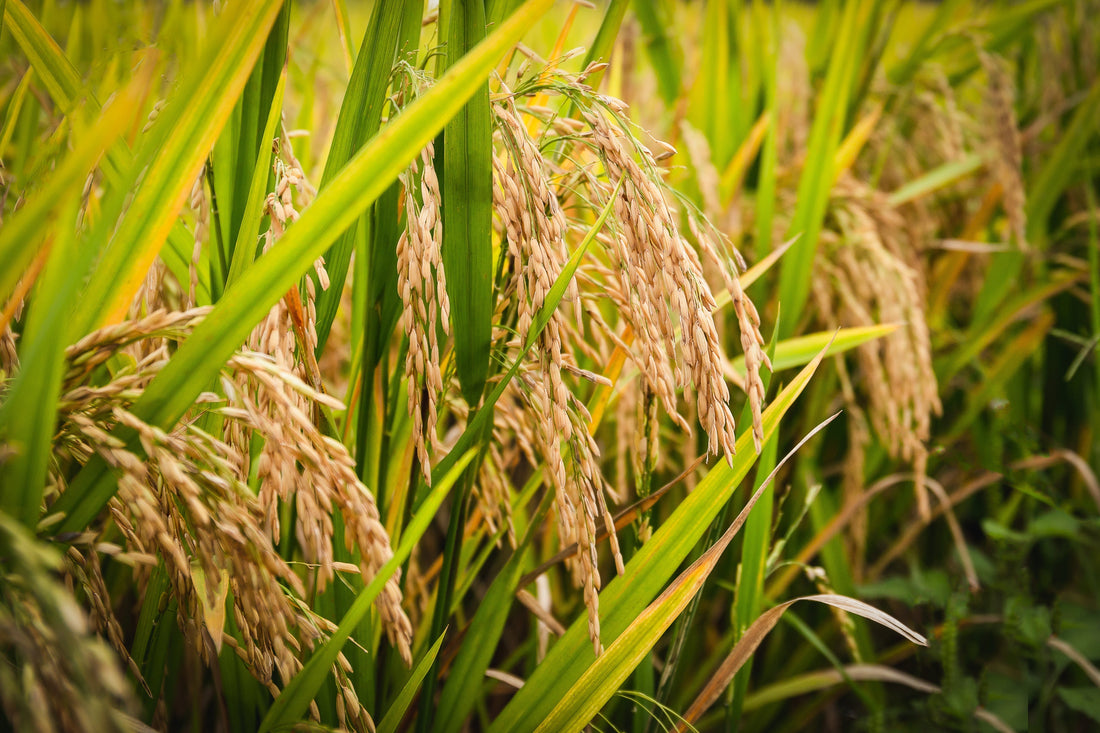Article by:-Yash Pandey
Introduction
Rice is the second most produced crop worldwide, second only to wheat. Rice is entrenched in Indian culture and religion,many Indian farmers still depend upon rice for their livelihood. However, the world is changing. With climate change comes new weather patterns that adversely impact the cultivation of rice through drought, flooding and increased temperatures. Drought and flooding reduce rice production while increased temperatures stress the farmer.
To combat these challenges, agriculturalists and scientists have united to create new, stress tolerant varieties of rice that can survive such conditions and help the farmer. This article will explore further the varieties created and how they assist the farmer in yield.
Varieties and How They Can Be Helpful
- Years of plant breeding and advances in technology have created viable agricultural scientists who have bred new varieties that can withstand the stress of rice cultivation—drought, submergence and heat.
- Swarna Sub-Stays alive with up to 14 days submergence (Good for farmers with low lands where there might be flooding)
- Sahbhagi DhanCan sustainin little water (Good for farmers with drought-like conditions)
Such variance can mean the difference between saving a crop in adverse conditions and providing at least a yield in troublesome situations instead of a total failure.These small but significant changes in rice varieties help farmers protect their crops in tough situations and reduce the risk of total crop loss.
Who Is Developing These Varieties?
Continuous research has gone into engineering such rice for drought/stress induced climates. The major institutions involved in developing these are:
ICAR – Indian Council of Agricultural Research
- NRRI – National Rice Research Institute
- IRRI- International Rice Research Institute
Major government initiatives support such research. Policies are crafted to create changes that ultimately reach the farmer. Two major policies are NICRA (National Insights in Climate Resilient Agriculture) and PMKSY (Pradhan Mantri Krishi Sinchayee Yojana).

How Do Farmers Get These Seeds?
A major problem that farmers sometimes face is that they don’t exactly know where these seeds are available, mainly due to a lack of information or awareness. These drought-resilient and climate-resilient rice seeds are available which are usually present in every district. Farmers can visit their respective KVKs to get training, try out at Krishi Vigyan Kendras (KVKs), sample seeds, and explore different government schemes related to seed distribution.
Farmers can also buy seeds from Farmer Producer Organizations (FPOs), which provide seeds in bulk at lower prices. FPOs often have access to new varieties recommended by agriculture experts.
Finally, farmers can contact their State Agriculture Departments and get information through local agriculture officers. They can also register and apply for seeds under different government schemes, which can ensure that the seeds are distributed to every part of the country, be it the smallest town or any rural area.
Where Have Farmers Adopted Them and What’s the Impact?
Farmers from different states have adopted this climate-resilient crop, mainly the farmers from the states of Orissa, Bihar, Chhattisgarh, and West Bengal. In 2011, randomized controlled trials took place in Orissa, where selected farmers received 5 kg of these modified seeds, sufficient to plant 0.1 to 0.2 hectares of land. This showed an impressive result of a 45% higher yield, even though the field was submerged for 10 days, strengthening the belief in the need for these crops.
Positive Impact on Farmers
Farmers report an increase in yield of up to 30% even under adverse weather conditions. Most of them have had a positive experience, as it has led to more resilient crops that protect them from the financial and emotional strain that comes after crop loss.
In an interview, a farmer from Odisha said that even after heavy rains and flooding of fields, the Swarna Sub-1 variety gave a healthy harvest. Another farmer from Jharkhand reported a good yield even though there was very little rain in the previous days.
Conclusion
To sum it up, the continued development of these seeds has already made a huge difference in the lives of many and will continue to be an important pillar in the field of agriculture with further support from government schemes and strong research.The only thing we now must ensure is an increase in awareness,
because if people are not aware of this, then it will be like sowing seeds on barren land.


